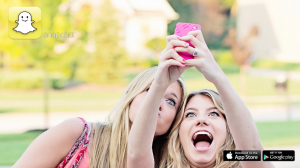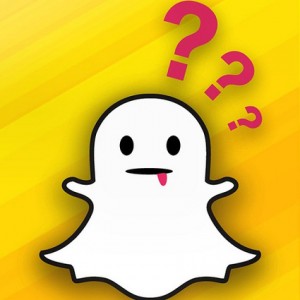
The age old-question of “What are the kids doing these days?” can be answered by yet another verb that’s not really a word: SnapChatting.
SnapChat has become the go-to medium for many when it comes to visual messaging. Its picture and video messages have been spurred on by the distinct selling point that SnapChats are not forever. In fact, they are the opposite.
The SnapChat service has differentiated itself from the competition by promoting the fact that its messages are viewable once by the recipient for only a few seconds before they are deleted forever, both from the user’s device and from SnapChat servers themselves. But how true are these claims?
Technically, they’re true–but with so many caveats that you might not feel as safe sending those “special” pictures anymore.
Shortly after SnapChat was released, users quickly learned the art of the screen-shot–saving the image of the screen to preserve the Snap itself.
SnapChat responded by having the app alert the sender if their message had been captured; being caught red-handed dissuaded the average user from making this social faux pas much longer.
However, there have been several apps that since have been released to aid in the secret saving of private messages. In August, Snap Save hit the market and provided sketchy SnapChat users the ability to save Snaps directly to their devices. Since then, multiple new apps have been released that provide the same functionality, including one app released as recently as this month.
The one positive (or drawback, depending on your viewpoint) to these third-party options is that they only apply to Snaps that have not yet been opened in SnapChat. That picture from last week you wish you still had? They can’t help you there.
Still, more options exist. In May, one computer-savvy user published a YouTube video showing where in the iPhone’s root folder the messages were saved. They still existed, and were viewable and sharable (with some know-how) even after the messages had “disappeared” from SnapChat.
[youtube http://www.youtube.com/watch?v=xPHsM9gXOnY&w=425&h=350]
A more recent concern, given larger technology privacy concerns in response to the Snowden NSA leaks, was whether or not SnapChat would share your risqué messages with the government.
The short answer: yes, they will–and they have.
The longer answer, which was detailed in a blog post from the company’s Trust & Safety Officer, Micah Schaffer, discusses stringent requirements that must be met before such cooperation, which includes a warrant. In addition, government entities can request the information be preserved on SnapChat’s servers for longer than the customary 30-day period.
This applies only to unviewed messages, and aside from the methods detailed above, viewed messages are gone; deleted from SnapChat servers.
In addition, there are only two employees at the company, Schaffer and co-founder and CTO Bobby Murphy, who have access to the tool that can manually retrieve unviewed messages. Since May, only about a dozen warrants have resulted in SnapChat turning over content, which is pretty minimal, given there are 350 million Snaps sent each day.
Despite all this, SnapChat use is still on the rise. Onavo Insights reports that 20 percent of iPhone users in the US actively use the app. Perhaps this shouldn’t be seen as a lack of security, but moreso just a fact of the internet age.
All of this information might unnerve a SnapChat user, but as grandma once said, “Don’t put it on the internet unless you want everyone to see it.” (My grandma is pretty good with computers.)
SnapChat is a part of the internet, and once it’s out there, the sender accepts that they’ve lost control of the content. I doubt the government would do much with your photos meant for that special someone, but as always, be smart about how and what you share.
What do you think about saving SnapChat messages? Let us know in the comments!

